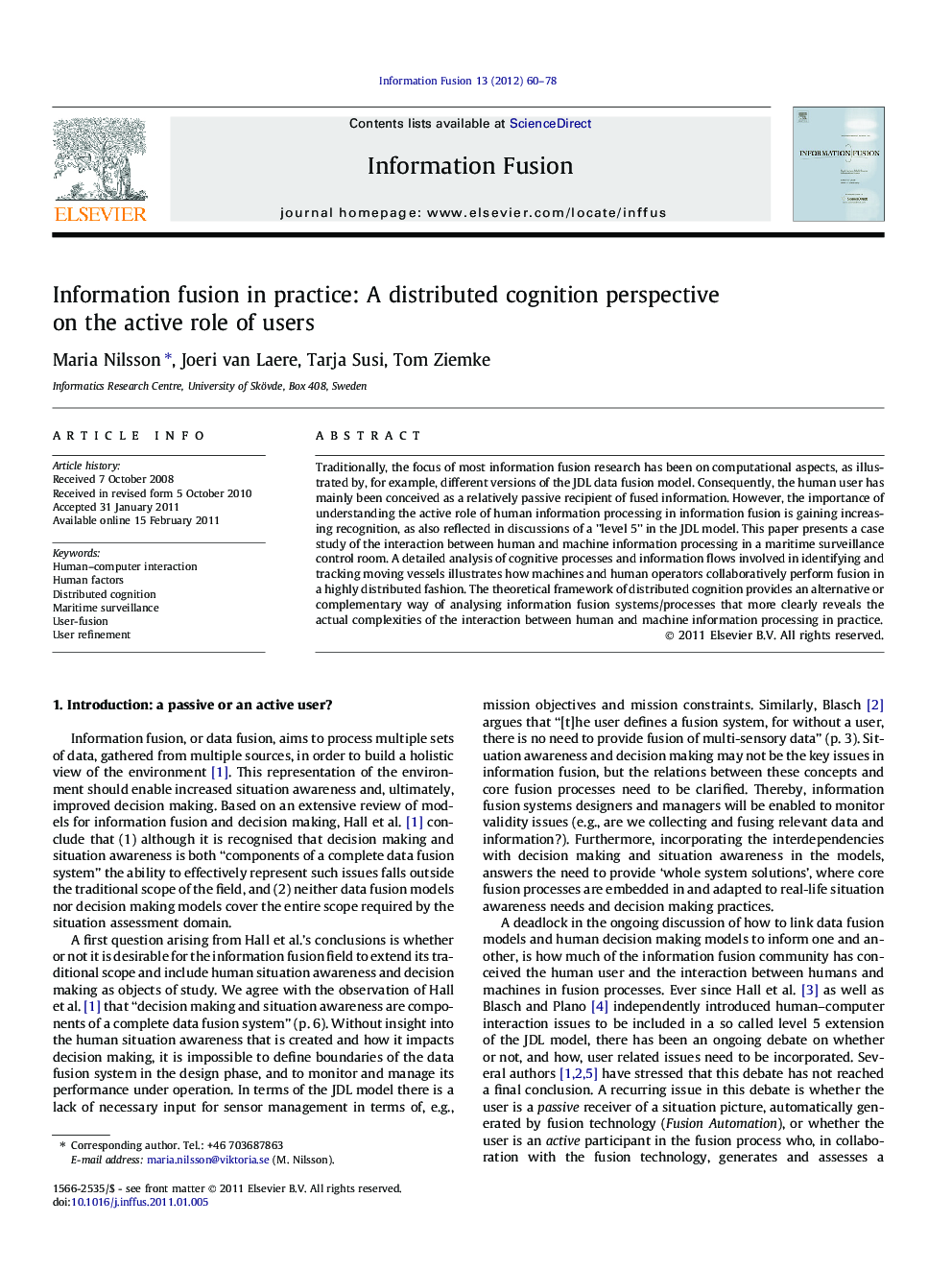| Article ID | Journal | Published Year | Pages | File Type |
|---|---|---|---|---|
| 532145 | Information Fusion | 2012 | 19 Pages |
Traditionally, the focus of most information fusion research has been on computational aspects, as illustrated by, for example, different versions of the JDL data fusion model. Consequently, the human user has mainly been conceived as a relatively passive recipient of fused information. However, the importance of understanding the active role of human information processing in information fusion is gaining increasing recognition, as also reflected in discussions of a ”level 5” in the JDL model. This paper presents a case study of the interaction between human and machine information processing in a maritime surveillance control room. A detailed analysis of cognitive processes and information flows involved in identifying and tracking moving vessels illustrates how machines and human operators collaboratively perform fusion in a highly distributed fashion. The theoretical framework of distributed cognition provides an alternative or complementary way of analysing information fusion systems/processes that more clearly reveals the actual complexities of the interaction between human and machine information processing in practice.
Research highlights► An empirical case study is presented of fusion in maritime surveillance. ► It is illustrated that machine and humans collaboratively perform fusion. ► Consequently, the fusion process is extended beyond information processing in machines. ► Distributed cognition can provide a complementary way of analysing fusion processes.
